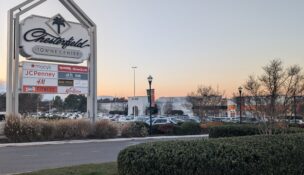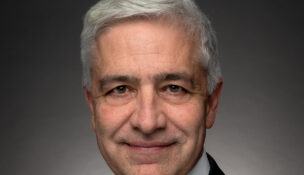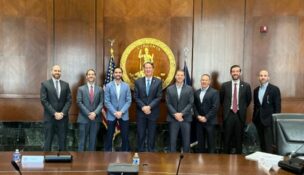Richmond to consider $1.5 billion Navy Hill project
Richmond to consider $1.5 billion Navy Hill project
In August, Richmond Mayor Levar Stoney unveiled plans for the city’s largest-ever economic development project — the $1.5 billion Navy Hill mixed-use development that could transform a 10-block area of downtown Richmond. Its future is in the hands of City Council, which is expected to vote on the project no sooner than the end of this year.
The centerpiece of the public-private partnership, proposed by a group of corporate heavy hitters led by Dominion Energy CEO Thomas F. Farrell II, is a $235 million, 17,500-seat arena to replace the 48-year-old Richmond Coliseum. It would be the state’s largest entertainment venue.
The plans also include 260,000 square feet of retail and restaurant space; a 541-room luxury hotel within walking distance of the Greater Richmond Convention Center; 1 million square feet of commercial and office space; more than 2,500 apartments; a $10 million renovation of the Blues Armory; and a GRTC Transit System bus transfer station. VCU’s Center for Urban and Regional Analysis estimates that the project, which is expected to take four to five years to complete, would create 9,300 permanent jobs and 12,500 construction jobs.
Farrell’s group, the nonprofit NH District Corp., has powerful backers, including luxury resort and hotel magnate William H. Goodwin Jr. and former Altria Group Chairman and CEO Martin J. Barrington. They promise that the project, which will rely primarily on more than $900 million in private investment, will carry no financial risk for city taxpayers.
Under the proposal, the city’s share would be funded by $350 million in nonrecourse bonds. It’s projected that revenues from a Navy Hill special tax district would pay back the bonds and produce an additional $1 billion in surplus revenues. Stoney has pledged that 50% of the surplus would go toward modernizing city public schools, with the rest funding affordable housing, neighborhood infrastructure and the arts.
Skeptics, however, say the project sounds too good to be true, especially given past economic development boondoggles such as the now-defunct 6th Street Marketplace shopping center and the Washington Redskins Training Camp.
“I think there’s some concerns around [the city’s] ability to manage large projects … and we cannot afford to waste any of our precious tax dollars,” City Councilwoman Kimberly Gray says. “It’s 6th Street, it’s Redskins — it’s a lot of these big projects that the taxpayer ends up holding the bag and closing the gap and footing the bill.”
Before voting on the project, City Council will hear from a commission anticipated to be appointed this month to study the proposal.
s
















